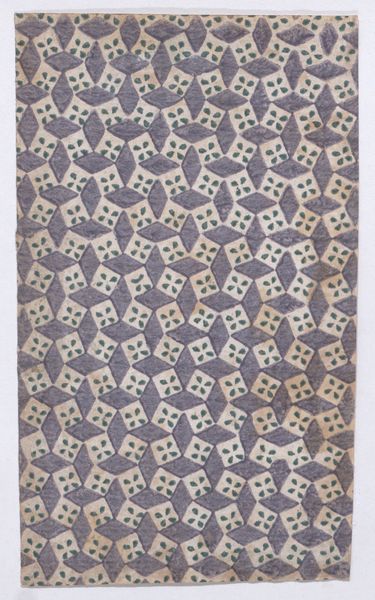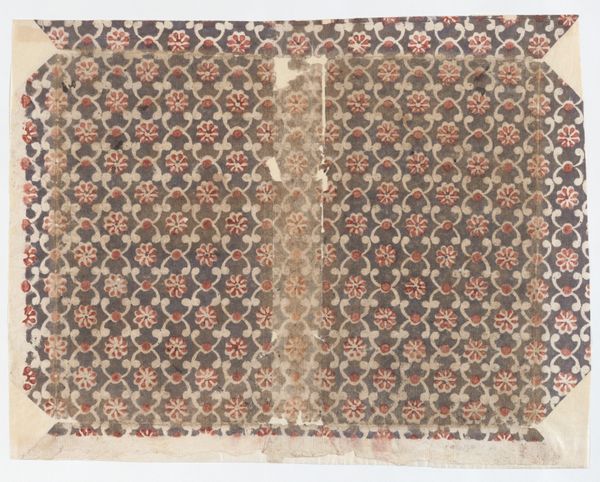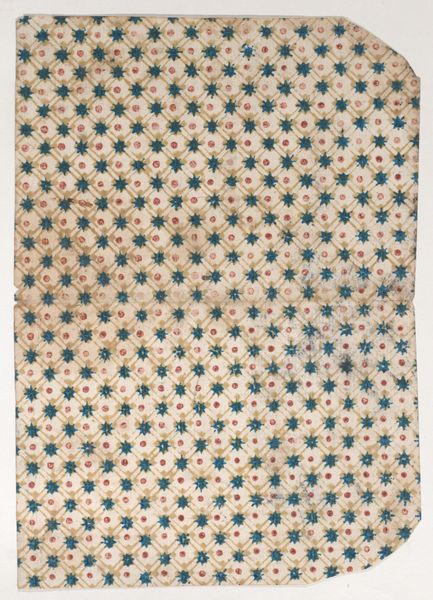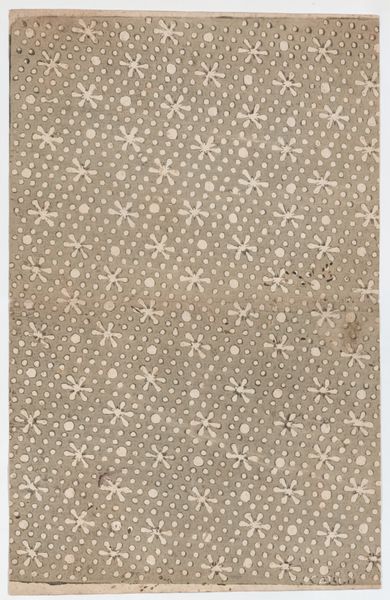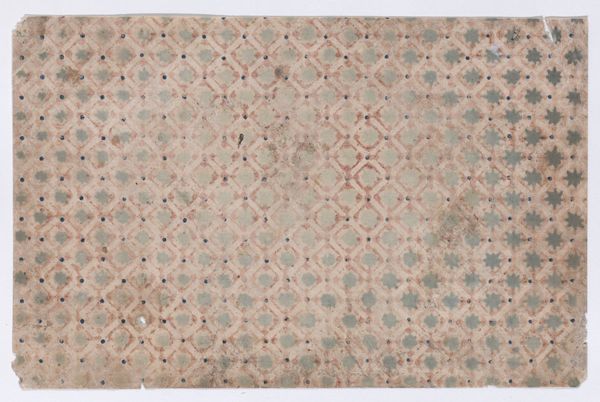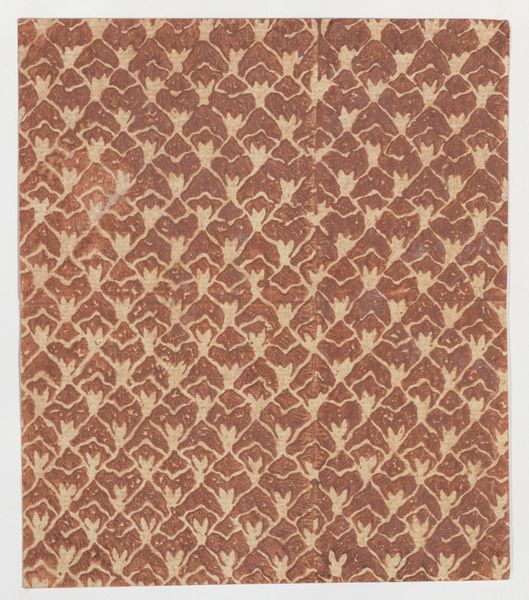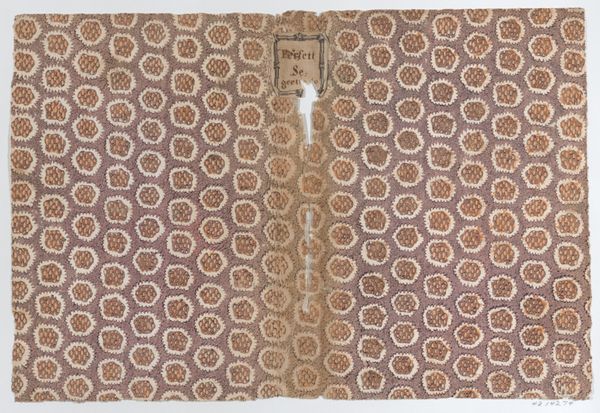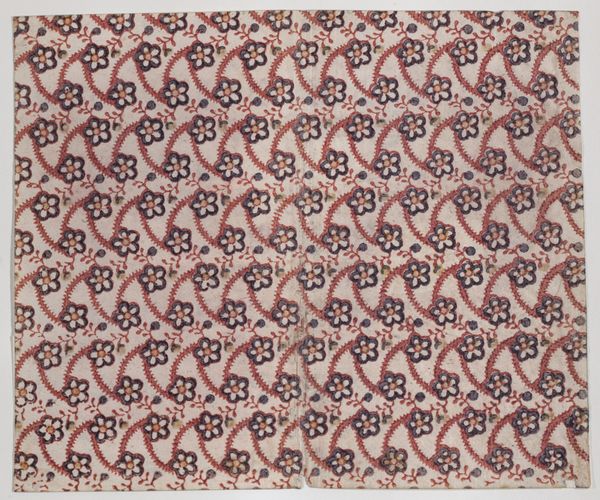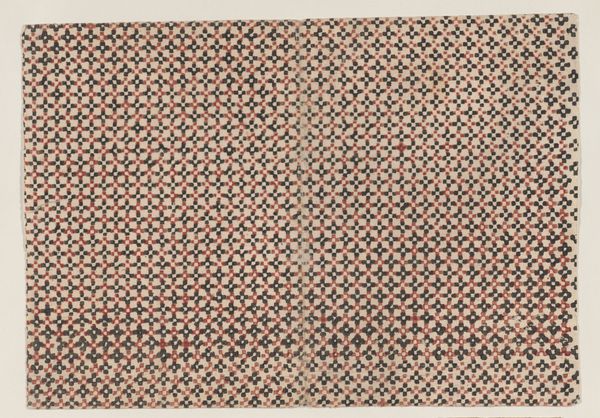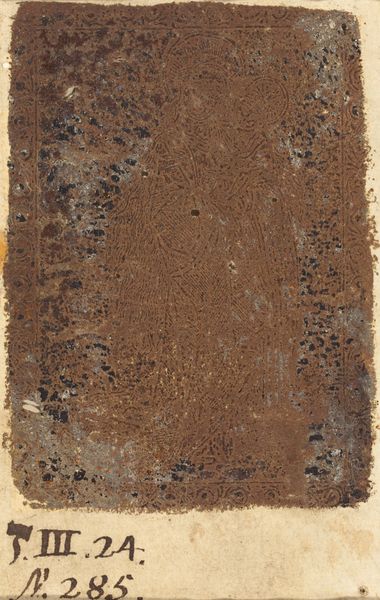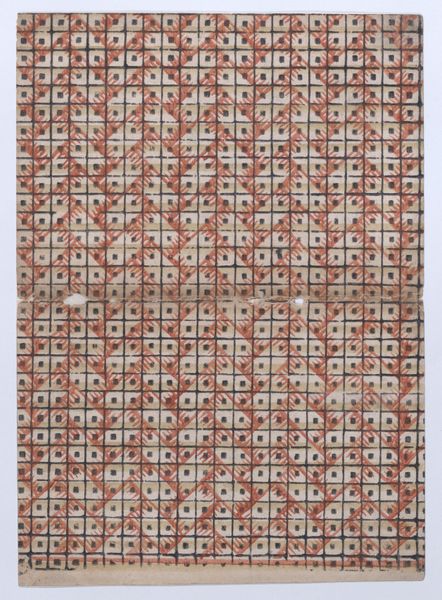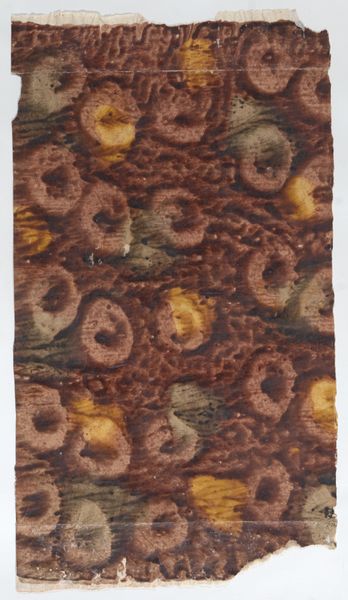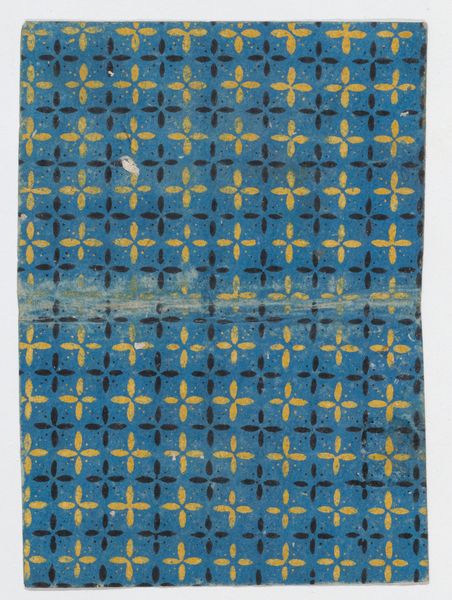
drawing, print, textile
#
drawing
#
organic
# print
#
textile
#
organic pattern
#
textile design
#
decorative-art
Dimensions: Sheet: 7 3/4 × 10 7/8 in. (19.7 × 27.7 cm)
Copyright: Public Domain
Editor: This is a book cover, made sometime in the 19th century by an anonymous artist. It’s a combination of textile, print and drawing, showing this floral and dot pattern. It feels really busy and handmade, less about 'high art' and more about utility. What strikes you when you look at it? Curator: I immediately think about the textile production process. Look at the repetitive nature of the design. Was this hand-blocked? Printed using some kind of industrial process emerging at the time? The labor involved is fascinating. The materials themselves -- what kind of dyes were used? How were they sourced? What does the ground itself feel like -- linen? Cotton? Editor: That makes me think, how would access to certain materials define who could even *make* something like this? Curator: Exactly! This wasn't just about aesthetic choice; it was constrained and enabled by the means of production. Was this for a mass-produced book, indicating a changing landscape of consumption and literacy, or a special commission for someone with means? This is not fine art, but functional design which had implications. Editor: I see your point! It really pushes you to think about who was making things, how they were made, and for whom. Not just, “is it pretty?" Curator: Precisely. We tend to separate "art" from "craft," but this blurs that boundary and forces us to reconsider the social and economic contexts of both. Editor: I definitely understand it better. Seeing it as less of a pretty picture, and more a trace of specific choices during production! Thanks! Curator: Indeed. It moves us beyond simple aesthetic appreciation towards a deeper understanding of how objects like this mediate human relationships and economics.
Comments
No comments
Be the first to comment and join the conversation on the ultimate creative platform.
